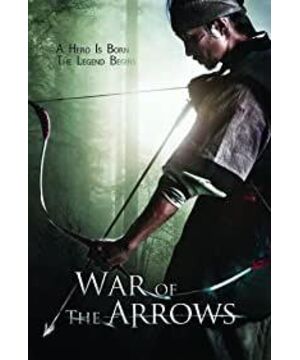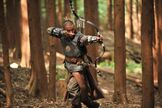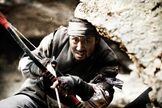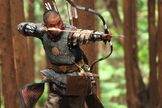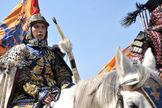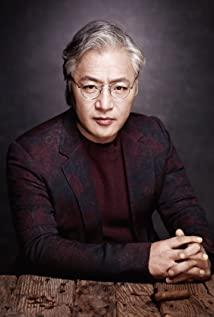Manchuria, also called Jianzhou, calling himself Jurchen. The Manchurian Jurchen and the Jurchen who founded the Jin Dynasty in history are not the same thing.
1. After Jurchen defeated Liao, Jin was established. Jin was defeated by Mongolia, and Jurchen was massacred. The rest basically
lived in the territory of Yuan. Is listed as the third class. After the great uprising in the late Yuan Dynasty, those descendants of Jurchens mixed with
Mongols were also massacred by Han people. After the establishment of the Ming Dynasty, almost no descendants of Jurchens returned to Baishan and Heishui.
Second, the Bronze Manchu and Jurchen Manchu are two fundamental text, nor is it visible Manchuria Jurchen culture, following
commitments by.
3. Jurchen is a nomadic people, while Manchuria is a semi-nomadic and semi-agricultural people.
-------------------------------------------------- ---------------------------------------- I
didn't want to comment, but I read this My dear friend, feel free to write something.
1. Jianzhou Jurchen is just one of many Jurchen tribes during the Ming Dynasty. In 1635, Huangtaiji changed its name to Manchuria. Manchuria
is a small tribe under the Ministry of Jianzhou. With the unification of the Jurchen tribes, the name Manchuria gradually became prominent
and used it to refer to the entire Jurchen and other conquered Tungusic tribes or tribes.
Just like Genghis Khan unified the Mongolian grasslands, the Mongolian nation came into being. Genghis Khan Mongolian Ministry of the original where only
a small tribe under the Ministry of begging Yen. There are also many tribes on the grassland. Such as smear children begging, Tata
Seoul, Naiman, Kerait and so on. There are many small tribes under each big tribe. Genghis Khan conquered
various tribes through war , and Mongolia became the general term for all tribes on the grassland.
At that time, the name Manchu was never used in the official and private works of the Ming Dynasty. They often used Jianzhou or Jurchen. North Koreans
also call them Jianzhou or Jurchen. The Manchus themselves are called Jurchen or Zhushen.
2. After the Mongolian extermination of gold, a large number of people in the Kingdom of Jin were massacred. The so-called almost no Jurchen descendants returned to the Baishan Heishui
. You have to understand that not all Jurchen ethnic groups have entered Han, or have been sinicized, and there are still no girls. The true
race stayed where they lived. The Yuan Dynasty's four-class policy clearly stated that the Chidanese and
Jurchens were also called Han people. Note that it is [Sinicized]. This shows that there are a considerable number of female human does not enter
into the Han, it is also not finished.
3. From Kin Ming Jurchen speaking, is a descendant of Jurchen gold remain, of course, ancient nomadic hunting and fishing or forest
peoples due to the factors of production and life, war and continuous migration, differentiation constant restructuring period, other people join
the family, Tribal and tribal elements. This kind of kinship doesn't make much sense.
As for whether the Jurchens who founded the Qing Dynasty and the Jurchens who founded the Jin Dynasty are the same thing. I ask you to build Han Han
people and the establishment of the Song Dynasty, the establishment of the Ming Han Chinese is not it all about?
Are the Mongols of today the same thing as the Mongols of Genghis Khan ?
4. "Jurchen Bronze and Manchu Manchu are basically two scripts. It can be seen that Manchuria is not the heir of Jurchen culture.
"
Jurchen script is a script modeled after Khitan and Chinese script, and Manchu is a script modeled after Mongolian script. . Of course it is two kinds of
text. But what about the language? Is it necessarily two languages? Is the oracle bone inscriptions written by the ancestors of the Han people?
Are they the same as the Chinese characters we use today? It can be regarded as two kinds of text. According to your logic, we are not
the heirs of the ancestral culture of the Han people either !
Today’s Mongolians in Inner Mongolia use Uighur Mongolian script, Mongolians in Xinjiang have used Tod script, Mongolian
Mongolian spelled by the Russian alphabet (Cyrillic). As you say, these three places of the Mongols should
this not a nation, right? Isn’t the same culture inherited?
I live in Xinjiang, Xinjiang Kazakhs are using the Arabic alphabet spelling of Kazakh, while the Ya Hasa
Kazakhstan Kazakh people are using the Russian spelling of Kazakh, they are not the same nation, inherit
identical Kind of culture?
Looking at Taiwan again, Taiwan uses traditional characters (traditional characters), and we use simplified characters. To be less rigorous, it can be regarded as two
languages. Then is Taiwan the successor of Chinese culture? Are we the same nation?
PS: I haven't figured out whether the "Jurchen culture" you mentioned refers to the riding and shooting culture or the Han culture? ----Jurchen cavalry is very fierce
, Manchu cavalry is also very fierce, Jurchens are sinicized, Manchus are also sinicized, what kind of culture do you mean? ?
? ? ? ? ? ? ? ? ? ? ? ?
Again language, spoken and written language, are in the developing and changing, women Jurchen language Ming and Qing Dynasties and Liao and Jin dynasties of
true language is certainly not exactly the same. There are many
differences between the Mongolians spoken by Mongolians in Xinjiang and Mongolians in Inner Mongolia .
Is today's Chinese the same as ancient Chinese? Is Beijing dialect the same as Cantonese? Is it the same language
? Are they the same ethnic group?
5. The Jurchens are not nomads. The Jurchens before Jin Jianguo were basically deep-forest fishing and hunting people. Because they mainly
lived in the forest area, the geographical environment made them distinct from the nomads living on the grasslands. He
's lifestyle both hunting and fishing, farming and animal husbandry three forms. Their lifestyles are determined by their respective
environments: in the forest, it is mainly fishing and hunting; outside the forest, it is animal husbandry or farming.
There is no similarity between the animal husbandry of the Jurchen people and the nomadic lifestyle of the grassland peoples, and it is used as a supplement to the fishing, hunting and farming economy.
Settled in animal husbandry.
Jurchen basic lifestyle as early as in the beginning of the eleventh century is about to begin a sedentary life and agriculture have been
economic. At the time of the maritime alliance, the Jin people once asked the Song Dynasty for water buffalo. Jin Dynasty, Jurchen there are "positive hit Earth every spring cattle," the
custom, with two horns on Jin Guojun team helmets, which are reflected in the economic life of Jurchen heavy cattle
to sex. In terms of animal husbandry, there are not only cattle and sheep, but also a large number of pigs. For the Jurchens, the best
meat is pork. In the early years of the Jin Dynasty, the Niutoudi system was implemented specifically for Meng'an Muke, who was dominated by
Jurchens . It can be seen that agricultural economy prevailed in Jurchen society at that time.
It should be noted that, until the Jin Dynasty, Jurchen agriculture is still in the original, extensive stage of agricultural
importance of the sector in the economy female human economic life is not too high, but it is closer to the qualities The
agricultural settlement lifestyle of the Han nationality .
What's more, the level of metallurgy, architecture, and wood production of the Jurchens is relatively high among all ethnic groups outside the Guan.
The battle against the Liao and Song cities was obviously different from the nomads who were only good at field battles.
The so-called "Manchuria is a semi-nomadic and semi-agricultural ethnic group." According to the records of the Ming Dynasty and Jianzhou Nuzhen, the Ministry of Jianzhou
purchased a large number of cattle and other agricultural equipment, indicating that at least the agricultural level of the Jianzhou tribe may be better than that of other tribes. More developed
. It should be noted that Manchurians, like Jin Jurchen, are herders, not nomads.
It is precisely because of this kind of production and life style that it is closer to the Han nationality's agricultural settlement life style. So Jurchen also
good, Manchuria or, (compared to the nomads, such as Mongolia, the Khitan) are more likely to accept Chinese culture, localization
and faster, deeper degree.
(There is an article called "The Road to the Sinicization of Jurchen and the Fall of the Daikin Empire". If you are interested, you can search for it
)
6. It is still a matter of blood lineage or blood relationship. In the war, the ancient northern peoples would take a large number of people. These captured
people and the northern peoples produced and lived together and gradually merged into one.
Genghis Khan united the Mongol steppe, the Mongols actually contains many different large and small tribes and ethnic groups,
some of which such as Genghis Khan and the Mongols has a very big difference, but they eventually became Mongolian
Guren.
Desert Simon (ancient Rutter Mongolia), Monan Mongolia, Mobei Mongolia (Khalkha), in which three Mobei Meng
Gu (Khalkha) some of the most pure lineage, and desert Simon (ancient Rutter Mongolia) then mixed with some of the
Ya Turkic descent, while powerful, launched many Zungar war against the people of Sark Ahab, looted a large number of Kazakhstan
Sark tribal population, live with Kazakhs and Mongolians, eventually became the Junggar people. From Vulcan
Torgouts plus return of the East River, the inevitable descent with other nomadic steppe of South Russia.
With such a complicated blood relationship, who are the Mongols?
The question on the female human body is the same and the Han Chinese, Ming and Jurchen Jurchen gold on the descent certainly not entirely a
cause. Some people always like to take blood as an example. So, do you say that the Hans of today and the Hans of the Qin and Han dynasties are in the
same line? I vaguely remember Qin Xi Rong people seem somewhat descent it, that unified the Qin Empire study
who were not Han Chinese regime it? Can you tell the bloodline of the Han people today?
Confucius' Spring and Autumn Annals "said:" barbarians into China, the Chinese, the Chinese Ruyi Di, the barbarians ", that is
to say, the barbarians to the Central Plains, the conventional Chinese cultural practices, they become Huaxia, while Huaxia
If a tribe enters a remote area and uses Yi Di’s culture and customs, they will become Yi Di, whether it is Yi Di or Hua
Xia does not depend on pedigree, but on the culture used, that is to say, the difference between Huayi and Yi is not a difference in pedigree but a difference in culture
.
Mencius inherited Confucius’s concept of ethnic distinctions, and further proposed the "Chinese saint king has no seed". He believed that
any nation in China as long as he has aspirations and talents can rule China and become the orthodox saint king. He said:
"Shun Born in Zhufeng, moved to Nishia, died in Mingtiao, Dongyi people, Wen Wang was born in Qizhou, died in Ying, Xiyi people
. "
Well, I have written so much, but it has nothing to do with the movie, just Feeling. Of course movies are good, commercial movies, don’t need to be so real. The tiger in the film is a bit fake.
It seems that I am quite true myself.
View more about War of the Arrows reviews


